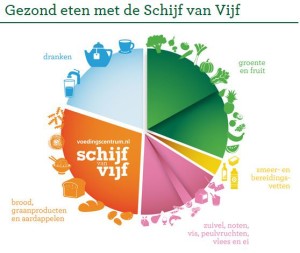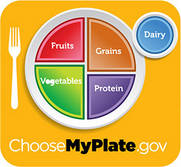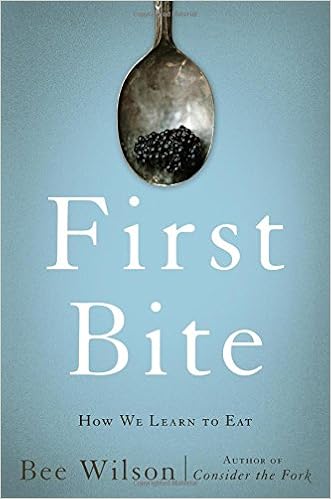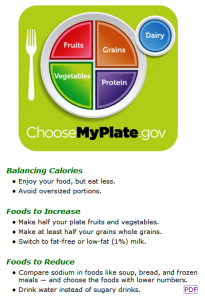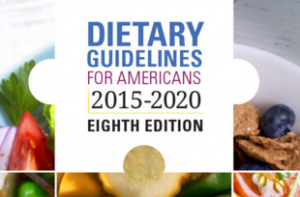While we are endlessly waiting for the release of the 2015 Dietary Guidelines, Tamar Haspel and I thought we would jump the gun and write up for the Washington Post what we think most makes sense: How to eat more healthfully, in 6 easy steps.
Here are our Rogue Dietary Guidelines:
Go through the fine print of the omnibus spending bill just passed by Congress, and you’ll see that the 2015 Dietary Guidelines, scheduled for release in — you guessed it — 2015, have been pushed out to 2016. You wouldn’t think that the government’s efforts, every five years, to help Americans eat more healthfully would turn into a political football. But when its appointed scientists reviewed the literature on meat and health, for example, they did something quite radical. They said what they meant with no equivocations: Americans should eat less meat.
As if that were not radical enough — previous committees had pussyfooted with such euphemisms as “choose lean meats to reduce saturated fat” — this committee insisted on an additional reason beyond health: environmental considerations.
The result? Uproar.
Arguments like the ones over the Dietary Guidelines, fueled by lobbyists, politicians and agenda-driven groups, make diet advice seem maddeningly inconsistent, but the fundamentals haven’t changed much at all.
It’s time to take back the process, so we’re going rogue and issuing our own Dietary Guidelines, untainted by industry lobbying, unrestricted by partisan politics. Here, in six easy steps, is our advice for the new year: what we think dietary guidelines ought to say.
- Eat more plants. You heard it from your grandmother. You heard it from Michael Pollan. Now you hear it from us: Eat your vegetables. Add fruits, beans and whole grains, and the wide-ranging plant category should make up most of your diet. Variety is the key. Plants offer us such an astonishing range of roots, stems, leaves, flowers, buds and seeds that there is bound to be something even the most jaded vegetable skeptic can love.
Vegetables, fruits, beans and whole grains: Plants should make up most of our diet. (J. Scott Applewhite/Associated Press)
- Don’t eat more calories than you need. Although on any given day it’s hard to tell whether you’re doing that, over the long term, your scale is a sure-fire indicator. If the pounds are going up, eat less.
Let’s pause here for the good news. If you follow our first two guidelines, you can stop worrying. Everything else is fine-tuning, and you have plenty of leeway.
- Eat less junk. “And what’s junk?” we hear you asking. We have faith that you know exactly what junk is. It’s foods with lots of calories, plenty of sugar and salt, and not nearly enough nutritional value. It’s soda and sugary drinks. It’s highly processed, packaged foods designed to be irresistible. It’s fast food. You know it when you see it. When you do, don’t eat too much of it.
- Eat a variety of foods you enjoy. There is research on the health implications of just about any food you can think of. Some — such as fish — may be good for you. You should eat others — such as meat and refined grains — in smaller amounts. The evidence for most foods is so inconsistent that you should never force yourself to eat them if you don’t want to, or deny yourself if you do. If you love junk foods, you get to eat them, too (in moderation, of course). You have bought yourself that wiggle room by making sure the bulk of your diet is plants and by not eating more than you need.
This is an appropriate place to talk about a phrase that has been thrown around a lot in the Dietary Guidelines brouhaha: “science-based.”
As a journalist (Tamar) and a scientist (Marion), we’re very much in favor of science. But in this situation, the food industry’s frequent calls for “science-based” guidelines really mean, “We don’t like what you said.”
Arriving at truths about human nutrition isn’t easy. We can’t keep research subjects captive and feed them controlled diets for the decades it takes many health problems to play out. Nor can we feed them something until it kills them. We have to rely on animal research, short-term trials and population data, all of which have serious limitations and require interpretation — and intelligent people can come to quite different opinions about what those studies mean.
Which is why “eat some if you like it” isn’t a wishy-washy cop-out. It acknowledges science’s limitations. We do know that plants are good, and we do know that junk foods aren’t, but in between is an awful lot of uncertainty. So, eat more plants, eat less junk, and eat that in-between stuff moderately. That is exactly the advice science demands.
What we eat and how we eat go hand in hand. We’ve all been there, sitting in front of a screen and finding that, all of a sudden, that bag, box or sleeve of something crunchy and tasty is all gone. We’re so focused on what to eat that how to eat gets short shrift. So:
- Find the joy in food. Eat mindfully and convivially. One of life’s great gifts is the need to eat, so don’t squander it with mindless, joyless consumption. Try to find pleasure in every meal, and share it with friends, relatives, even strangers.
- Learn to cook. The better you cook, the better you eat. There are days when cooking feels like a chore, but there are also days when you find profound satisfaction in feeding wholesome homemade food to people you love. And foods you make at home are worlds apart from foods that manufacturers make in factories. No home kitchen ever turned out a Lunchable.
If you go out in the world armed only with these guidelines, you’ll do great. Sure, there’s much more to know, if you want to know it. We’ve forged careers writing about food and nutrition, and either one of us could talk micronutrients until your eyes glaze over. But these few basics are all you need to make good food decisions. Choose foods you like, cook them and enjoy them.
It really is that simple.
Haspel is the James Beard award-winning writer of Unearthed, a Washington Post column devoted to finding out what’s actually true about food.
Nestle is professor of nutrition, food studies and public health at New York University and is the author, most recently, of “Soda Politics: Taking on Big Soda (and Winning).”
